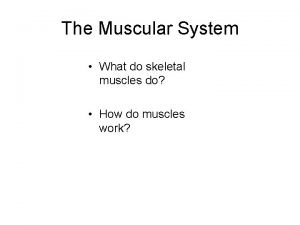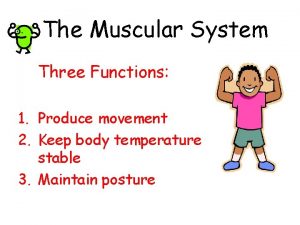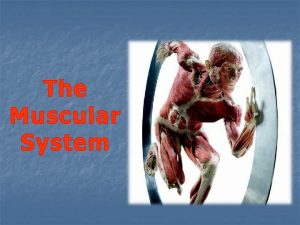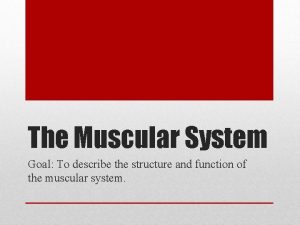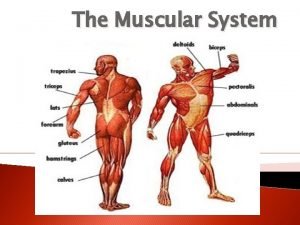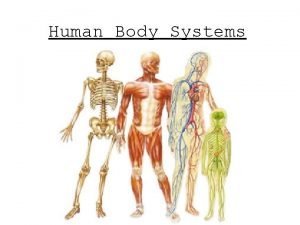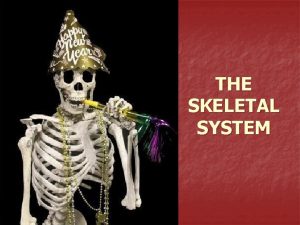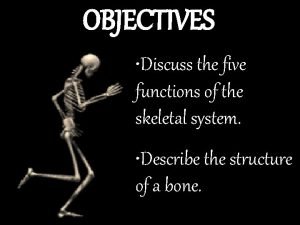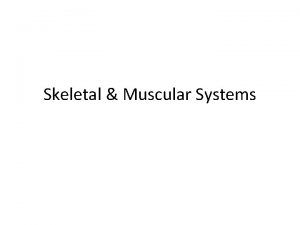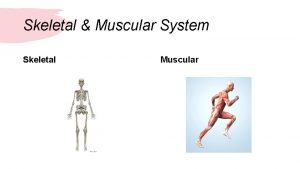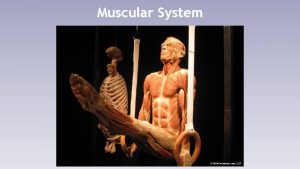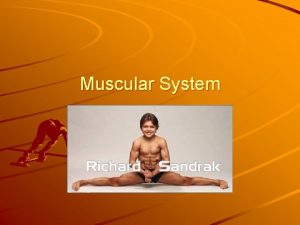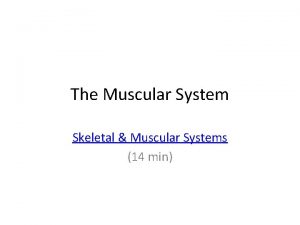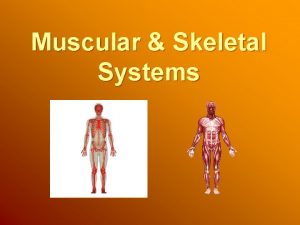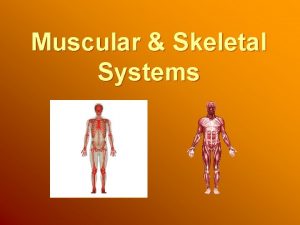Skeletal and Muscular Systems Skeletal System Functions Gives











- Slides: 11

Skeletal and Muscular Systems

Skeletal System

Functions • Gives structure to the body • Supports Muscles • Protects organs

Organs • There are 206 bones in the body. • Layers of bone: – Periosteum – bone membrane – Compact Bone – hard part of the bone that provides support. – Spongy Bone – framework of the bone that makes bone light and strong. – Bone Marrow – produces blood cells and stores energy.

Bone Structure Periosteum Marrow Bony layer Blood vessels

Structures • Joint – place where bones are connected • Ligament – tough bands of tissue that hold joints together. • Tendon – cords that connect muscle to bone

How It Works • Muscles are connected to bones. When they cross a movable joint, they act to move it. • Types of Joints – Ball-and-socket Joint= shoulder and hip – Pivot Joint = top two vertebrae and elbow – Hinge Joint = knee and elbow

Muscular System

Function • Movement of the body • Protection of the joints • Heat creation

Organs • Muscles are made up of long paired strands of proteins. • Types of muscles – Skeletal Muscle – voluntary muscle that moves the body. – Smooth Muscle – involuntary muscle that lines internal organs; found in digestive tract and blood vessels. – Cardiac Muscle – muscle that is specific to the heart.

How It Works • Muscle can only contract and relax. Joints are moved by shortening muscles. • Muscles work in tandem. This is called reciprocal innervation. One muscle contracts on one side of the joint while the muscle on the other side relaxes.
 Chapter 36 skeletal muscular and integumentary systems
Chapter 36 skeletal muscular and integumentary systems Chapter 14 skeletal muscular and nervous systems
Chapter 14 skeletal muscular and nervous systems Major skeletal muscles
Major skeletal muscles Skeletal and muscular system
Skeletal and muscular system Plyometrics disadvantages
Plyometrics disadvantages Three functions of the muscular system
Three functions of the muscular system What is the primary function of the muscular system
What is the primary function of the muscular system 4 function of muscular system
4 function of muscular system Muscular syst
Muscular syst 3 function of muscular system
3 function of muscular system Five functions of the skeletal system
Five functions of the skeletal system What are the five functions of the skeletal system?
What are the five functions of the skeletal system?


